
Neck pain is a growing complaint among people of all ages, and if left untreated, it can become worse, causing headaches, nerve pain, and wear and tear on the cervical vertebrae. Yet many people ignore symptoms of neck and upper back pain, and do not seek care from a neck pain doctor until the pain becomes unbearable.
Knowing the causes of neck pain and adopting some strategies to treat early symptoms can save you from having to seek neck pain treatment from a chiropractor.
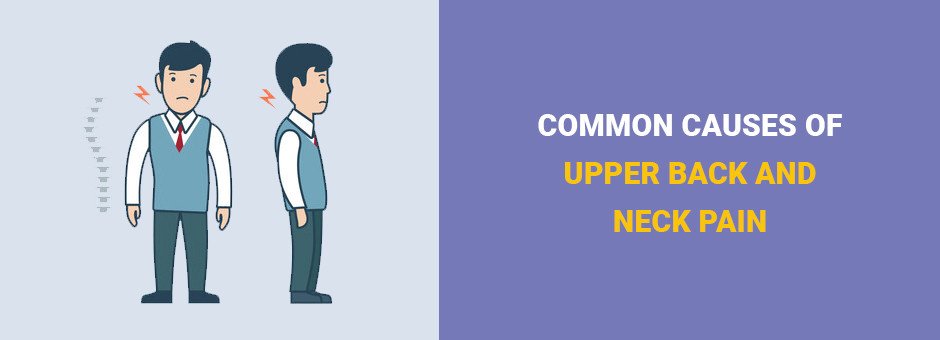
In the majority of cases, with the exception of sudden trauma, neck pain is a lifestyle-related condition, and therefore avoidable. The most common causes of pain and tension in the upper back and neck are:
Sedentary lifestyle: The human body is designed to move. If you lose your muscle tone from inactivity, your joints, bones and organs shift out of alignment. Weak muscles in your neck and upper back are unable to stabilize your head, which weighs about the same as a bowling ball. Staying physically active is key to avoiding pain and tension in your neck and upper back, and throughout your entire body.
Poor posture: Posture is the way things line up in your body, relative to gravity. Soldiers are trained to stand at attention with perfect posture because it uses the least amount of energy and preserves physical integrity. Good posture is a function of both fitness and awareness. Try to be mindful of how your body lines up as you sit, stand and walk.
Chronic stress: Stressful lifestyles are the norm these days, and they trigger a “flight or fight” response that preps your body to either run or rumble. When the response kicks in, your body releases hormones like cortisol, adrenaline and others that cause your heart rate, respiratory rate and blood pressure to go up, and your muscles to tense. Chronic stress puts you in a perpetual state of flight or fight. Not only does it have dire consequences for your metabolic health, but it creates tension in your neck and upper back that can lead to headaches and irritated nerves.
Your neck muscles work together with tendons, ligaments and bones to support and stabilize your head, rotate it from left to rights, and tilt it at various angles during flexion and extension. When muscles are tense, your neck range of motion is reduced, and certain motions can be painful.
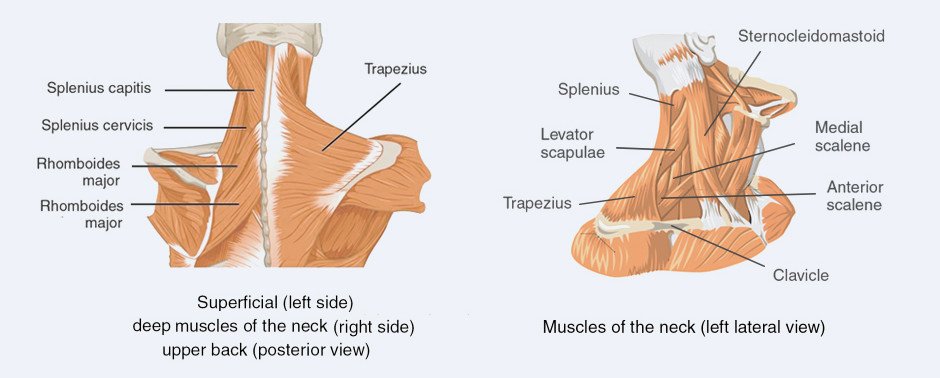
The primary muscles that contribute to neck pain and tension include:
Sternocleidomastoid (SCM) muscles on both sides of the neck that rotate the head and tilt the chin upward
Trapezius, the flat triangle-shaped muscle in your upper back, involved in extending the neck, rotating the head, and elevating the shoulder blades
Levator scapulae, that lifts the shoulder blades, laterally flexes the neck and rotates the head.
Deep cervical flexors involved in flexing the neck forward and stabilizing the cervical spine
Erector spinae muscles that support upright posture, rotate the neck, and extend the neck backward
Suboccipitals that connect the cervical spine with the base of the skull, and extend and rotate the head
Neck pain is mostly neuromuscular in nature, involving the muscles of the neck and upper back and the nerves that innervate them, along with long neural bodies that travel among and between the muscles to various parts of your body. When muscles are tight, nerves can become compressed or entrapped, affecting both local and distant tissues and organs.
To prevent and resolve neck pain and tension, there are many small changes you can make that pay big dividends.
Exercise. Being physically active with whole-body activities like walking or swimming will naturally create balance and promote good postural alignment.
Manage stress. Chronic stress is a major cause of life-threatening conditions like heart disease, hypertension and stroke. Stress produces tension in the muscles of the neck and upper back.
Breathe. Deep breathing helps calm ragged nerves, and soothes the flight or fight response. Close your eyes and take several slow deep breaths whenever you feel stressed.
Adjust your workspace. Poor workspace ergonomics can force your body into unnatural positions that strain the muscles of your neck and upper back.
Be mindful of posture. It is easy to slip into bad postural habits without realizing it. Check and adjust your posture throughout the day to reduce strain on your neck muscles.
Take mini stretch breaks. Stretch your neck, shoulders and upper back throughout the day to relieve tension and reset your posture.
Try these simple exercises to reduce tension and pain throughout the day.
Seated neck stretch
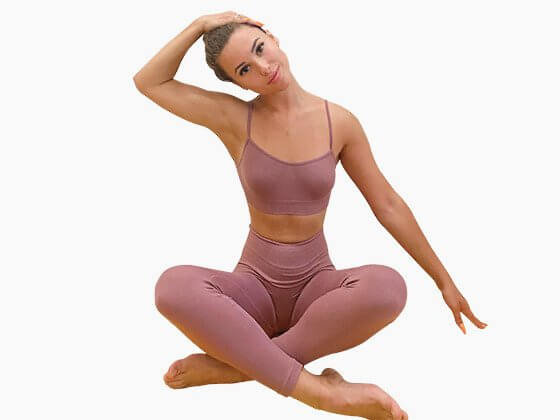
Sit erect on a hard chair, or cross-legged on the floor
Place one hand beneath the edge of your chair or on the floor next to your hip
Place the fingertips of your other hand above the opposite ear
Gently press against your head, pulling it toward your opposite shoulder
Adjust your head position to target tight spots
Breathe deeply and hold for 10-30 seconds
Tension-release shrugs

Stand or sit with your spine erect, arms relaxed at your sides
Inhale and draw your shoulders up toward your ears
Hold for 3-5 seconds
Exhale and drop your shoulders, releasing tension
Repeat 3-5 times
Behind-back clasp and lift
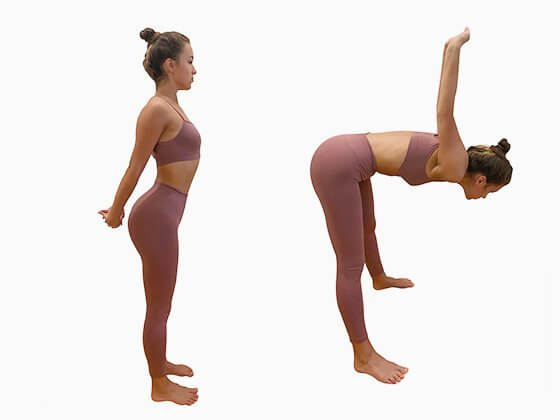
Stand erect, feet hip-width, chin parallel to floor
Clasp your hands behind your back
Lift your chest and inhale deeply
Exhale, relax, repeat
For a greater challenge, pull your clasped hands away from your body
For an even greater challenge, hinge forward from your hips and lift your arms away from your body
Seated trunk rotation
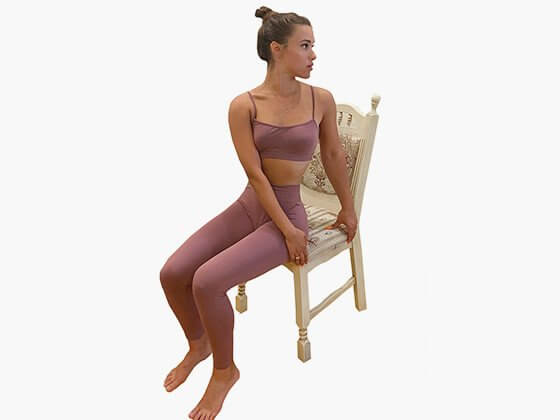
Sit erect on a hard chair
Place one hand behind the chair back
Place the other hand on the opposite knee
Inhale deeply, then exhale and rotate your spine, gazing over your shoulder
Hold for 15-30 seconds
Repeat to opposite side
Seated shoulder rolls
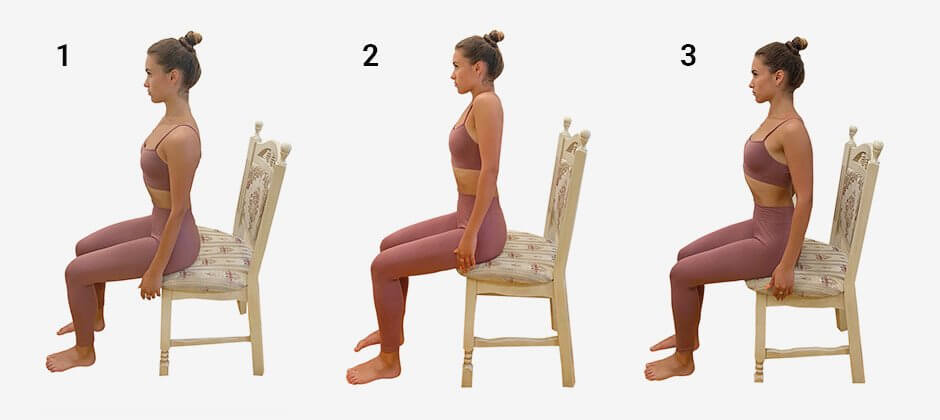
Sit erect on a hard chair or cross-legged on the floor, arms relaxed at your sides
Inhale and lift your shoulders toward your ears
Exhale and roll them back and down
Repeat 10-15 times
Reverse directions, pulling shoulders up and then rolling them forward
If you are suffering from chronic neck pain or headaches, you need to see a neck pain specialist who can get to the source of your pain and resolve it for good. Treatment may include chiropractic care, physical therapy, therapeutic massage, posture retraining and other treatments aimed at relaxing tense muscles and realigning your posture. Contact NYDNRehab today, and get rid of neck pain so you can get on with pain-free living.
Resources:
Krøll, L.S. et al. Level of physical activity, well-being, stress and self-rated health in persons with migraine and co-existing tension-type headache and neck pain. J Headache Pain 18, 46 (2017).
Kunst, P., & 3, S. (2019, September 03). Self-reported causes of back pain adults U.S. 2017. Retrieved July 21, 2020, from
Research at NYDNRehab
Dr. Lev Kalika is a world-recognized expert in musculoskeletal medicine. with 20+ years of clinical experience in diagnostic musculoskeletal ultrasonography, rehabilitative sports medicine and conservative orthopedics. In addition to operating his clinical practice in Manhattan, he regularly publishes peer-reviewed research on ultrasound-guided therapies and procedures. He serves as a peer reviewer for Springer Nature.
Dr. Kalika is an esteemed member of multiple professional organizations, including: